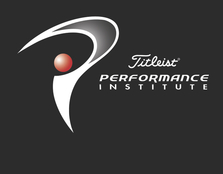 It is almost time to put the clubs away as winter is approaching, so now is the perfect opportunity to work on your body to prepare for next year’s golf season or golf in Florida. When looking back on your golf season, there may be aspects of your game that you wanted to improve upon or deduce why some aspects did not improve. To be at the top of your game and have an injury free season there are a lot of helpful tips in order to flourish on the links. Many injuries can be caused by playing golf, including: injuries to the ankle, elbow, spine, knee, hip, and/or wrist. Those injuries can be avoided or highly minimized by doing a few specific exercises and stretches before even touching a club. There are also ways to improve your swing by addressing physical impairments that can be limiting or reducing your ability to control your motion.
It is almost time to put the clubs away as winter is approaching, so now is the perfect opportunity to work on your body to prepare for next year’s golf season or golf in Florida. When looking back on your golf season, there may be aspects of your game that you wanted to improve upon or deduce why some aspects did not improve. To be at the top of your game and have an injury free season there are a lot of helpful tips in order to flourish on the links. Many injuries can be caused by playing golf, including: injuries to the ankle, elbow, spine, knee, hip, and/or wrist. Those injuries can be avoided or highly minimized by doing a few specific exercises and stretches before even touching a club. There are also ways to improve your swing by addressing physical impairments that can be limiting or reducing your ability to control your motion.

Finding a TPI certified specialist can help you figure out where and why your swing may not be optimal. TPI discovered how a properly functioning body allows a player to swing a golf club in the most efficient way possible and also analyzed how physical limitations in a player’s body can adversely affect the golf swing and potentially lead to injury.
Performing a TPI screen will aide in divulging areas of the body that can be causing direct swing complications, ultimately resulting in more mishits and high handicaps. For example, finding that you are unable to move your mid back (thoracic spine) may lead to limited rotation, thus increasing your use of arm motion during your swing, which can result in golfer’s elbow amongst various other injuries.

In my clinic, one of the most common golf injury is golfer’s elbow, also known as medial epicondylitis. Golfer’s elbow is an inflammation of the tendons that attach your forearm muscles on your inner elbow. This injury primarily occurs from overuse by repeating the same motions over and over and usually due to aforementioned poor swing mechanics. This results in pain and tenderness on the inside of the elbow. To prevent this problem one has to strengthen forearm muscles and perform elbow stretching, however, getting a TPI screen in order to see what other areas of the body can be causing compensation will reduce the likelihood of recurring injuries. One simple exercise for strengthening forearm muscles, would be to squeeze and hold a tennis or racquetball for 5 seconds, performing that 3 sets of 10 repetitions. Another easy exercise is wrist curls, with your palm up, using a light dumbbell (3-5lbs) with the weight to the end of your fingers and curling it up to your palm. The last forearm exercise is a reverse curl which is the inverse of the exercise above, with your palm down and bending your wrist to the ceiling.

Another common injury with golf are low back injuries. A few reasons players can get low back injuries can be due to a decrease in thoracic motion, core, glute weakness, and limitations in hip rotation. With these limitations present players will most likely compensate in order to execute a back swing in order to make contact with the ball. A simple screen can isolate one or a few of these problems in order to address the issue, correct the swing and avoid inevitable painful compensations. Poor flexibility and muscle strength can cause minor strains in the back that can easily become severe injuries over time.
Michael is Titleist Performance Institute Certified. This certification allows him to use the same distinguished evaluation and screening techniques that PGA players use to enhance performance and prevent golf related injury. Golfers of all ages and skill levels benefit from his golf performance program. Michael Demetriades DPT received his doctorate degree from Quinnipiac University. He has experience in working with all ages and injuries. Michael is a previous varsity hockey and baseball player who is well versed in the modern athlete. Contact our Branford location at 203-433-4683 or visit our website at www.amitypt.com/golf-performance to see how we can improve your golf game and movement.

